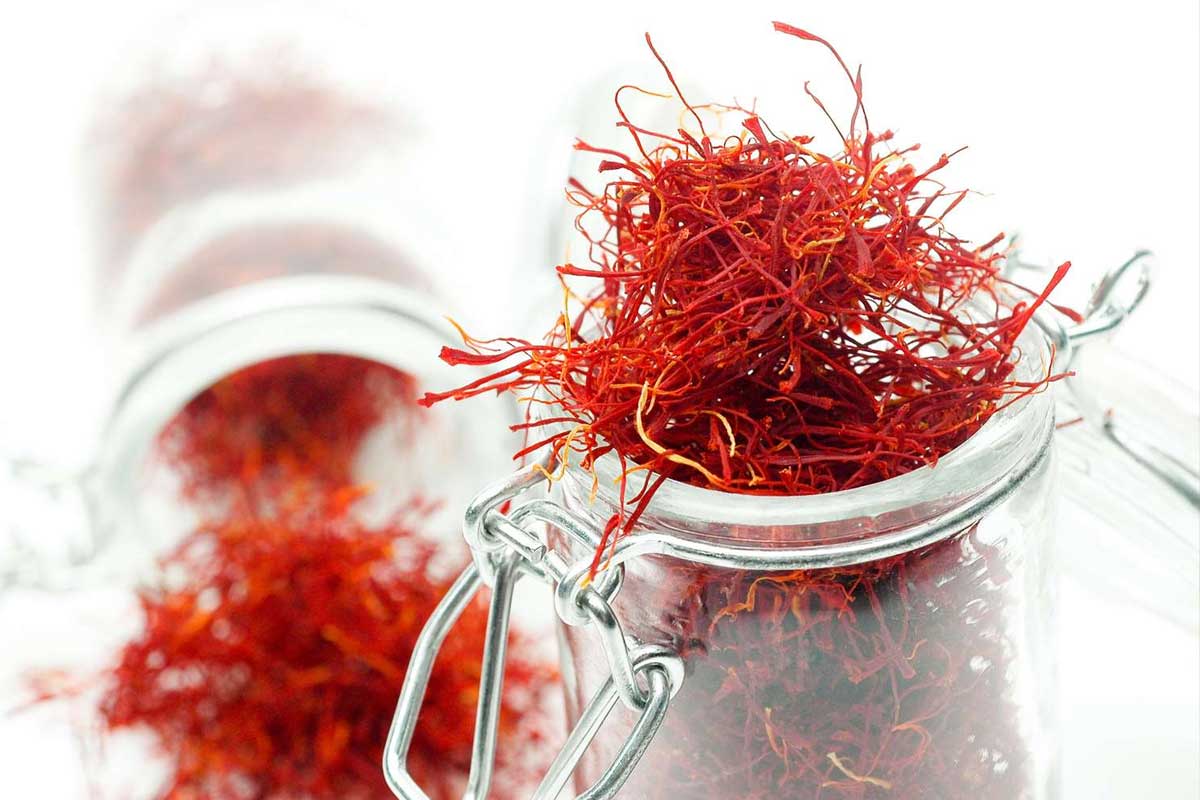Free Express International Delivery & Easy Returns
Free Express International Delivery & Easy Returns
Unlocking the Mysteries of Saffron: Chemistry and Composition

Saffron, revered for its vibrant color, unique flavor, and aromatic fragrance, contains a complex array of chemical compounds that contribute to its extraordinary qualities. Unlocking the mysteries of saffron’s chemistry and composition reveals the intricate interplay of pigments, volatile oils, and bioactive compounds that make it one of the most prized spices in the world.
The vibrant red-orange color of saffron is attributed to three main pigments: crocin, crocetin, and picrocrocin. Crocin is a water-soluble carotenoid compound that gives saffron its intense color. It is responsible for the characteristic hue of saffron-infused dishes and beverages. Crocetin, a fat-soluble carotenoid, provides additional color intensity and stability to saffron threads. Picrocrocin is responsible for saffron’s bitter taste and contributes to its overall flavor profile.
Saffron’s aromatic fragrance is primarily due to the presence of volatile oils, particularly safranal. Safranal is a compound derived from the breakdown of picrocrocin during the drying process of saffron threads. It is responsible for the distinctive aroma of saffron and contributes to its sensory appeal. Dimethylcrocetin, another volatile compound found in saffron, also contributes to its aroma and flavor.
Saffron contains a variety of bioactive compounds, including antioxidants and phytochemicals, that contribute to its health-promoting properties. These compounds include flavonoids, terpenes, and phenolic compounds, which possess antioxidant, anti-inflammatory, and neuroprotective effects. Saffron’s bioactive compounds have been studied for their potential benefits in promoting heart health, improving cognitive function, and reducing oxidative stress.
Water-soluble extracts of saffron, such as saffronal and crocetin glycosides, are responsible for its water-soluble properties and bioavailability. Saffronal is a derivative of safranal, while crocetin glycosides are derivatives of crocetin. These compounds contribute to saffron’s color, flavor, and aroma when infused in water or other aqueous solutions. They also play a role in saffron’s therapeutic effects when consumed as a dietary supplement or herbal remedy.
Research into saffron’s chemistry and composition has revealed its potential therapeutic applications in various fields, including depression, cancer, and aging-related disorders. Saffron’s bioactive compounds, particularly crocin and crocetin, have demonstrated antidepressant effects in preclinical and clinical studies. Additionally, saffron’s antioxidant properties may help protect against oxidative damage and inflammation associated with chronic diseases such as cancer and neurodegenerative disorders.
Unlocking the mysteries of saffron’s chemistry and composition provides valuable insights into its extraordinary qualities and potential health benefits. From its vibrant pigments to its aromatic volatile oils and bioactive compounds, saffron’s chemical profile is a testament to its status as one of nature’s most precious treasures. Further research into saffron’s chemistry holds the promise of uncovering new therapeutic applications and enhancing our understanding of its role in promoting health and well-being.
Please feel free to contact us for any inquiries related to Saffron.
Copyright © 2024 Zaflore.